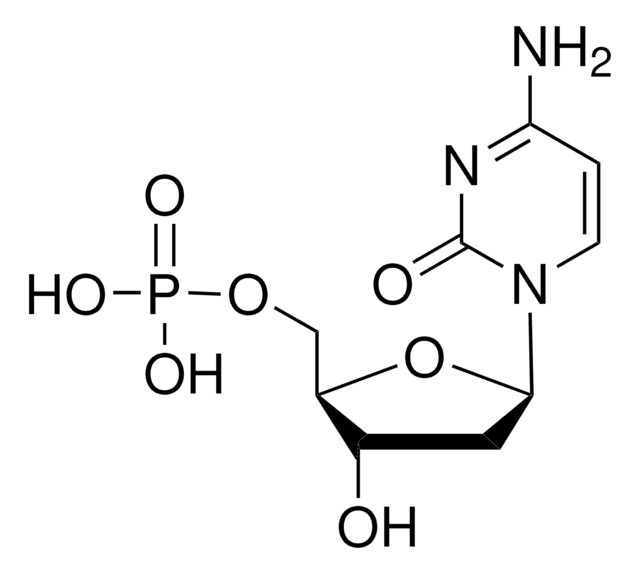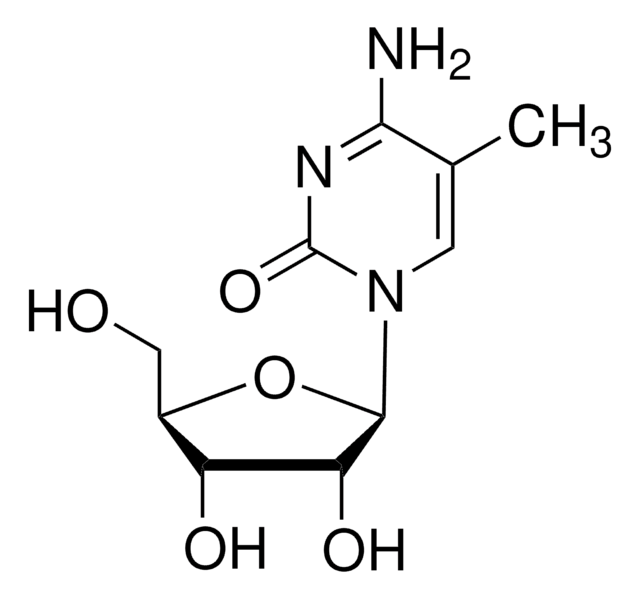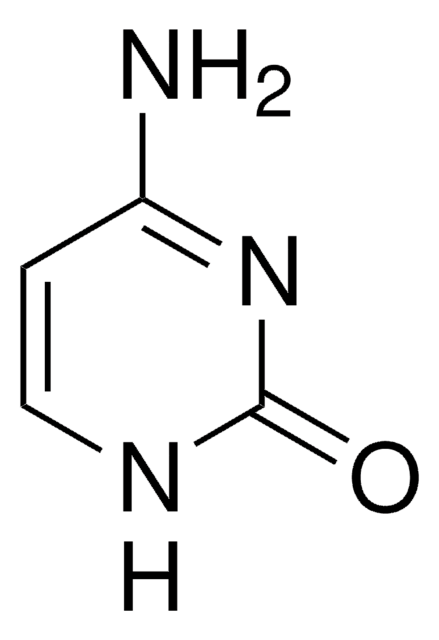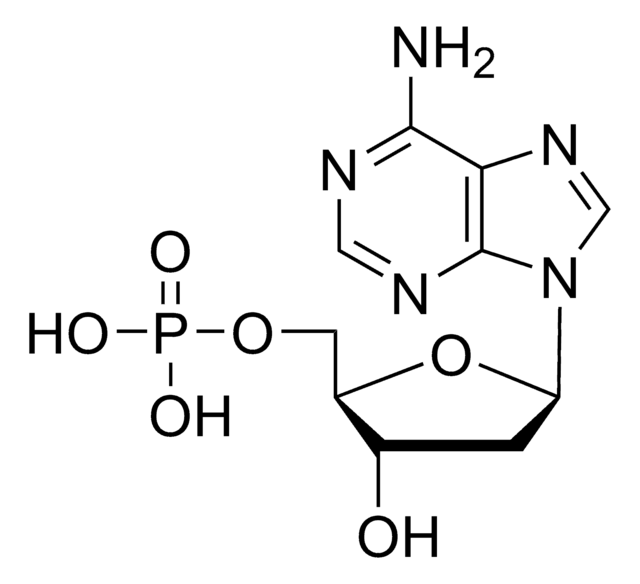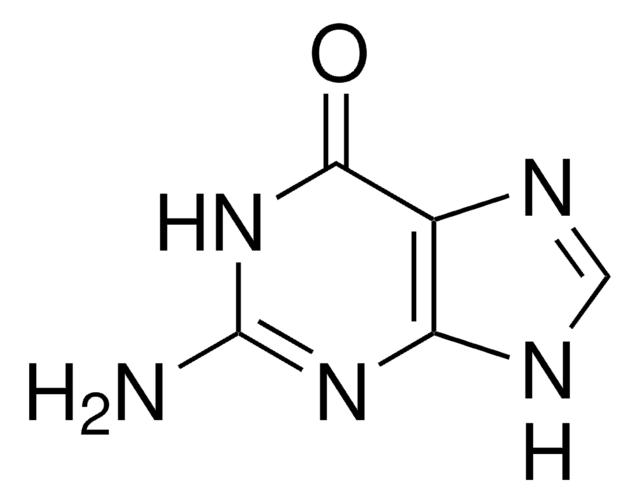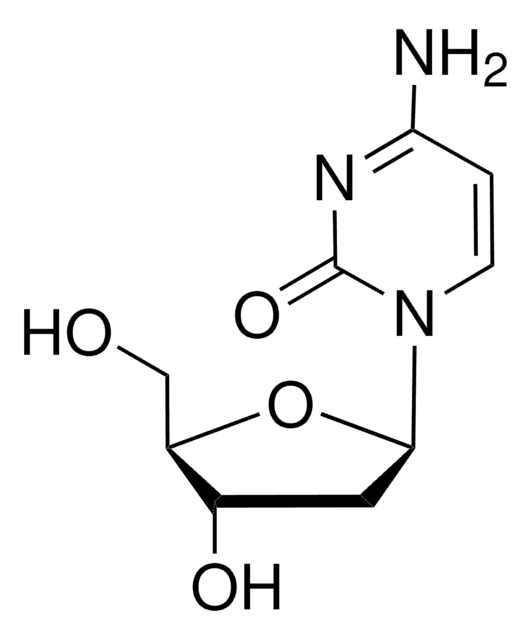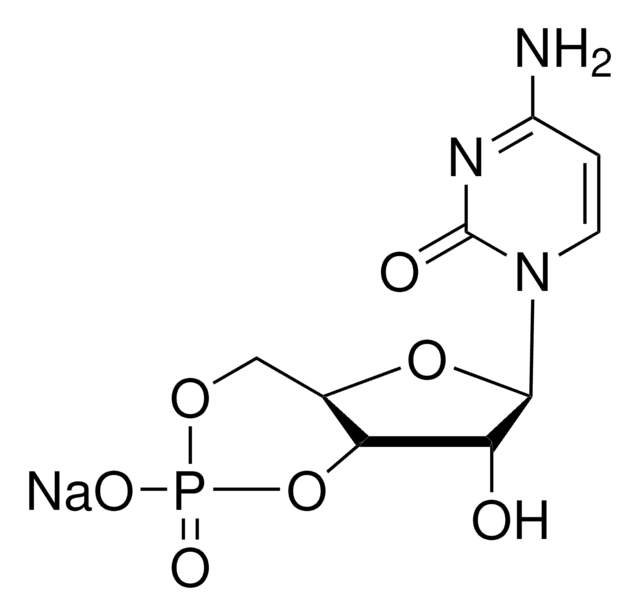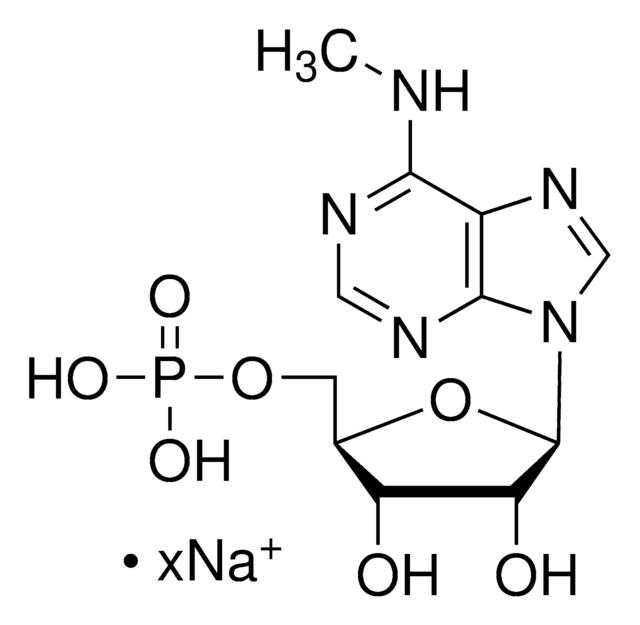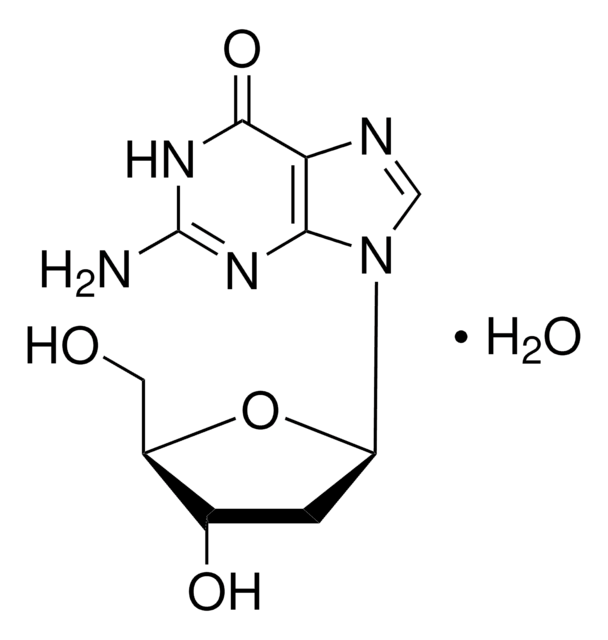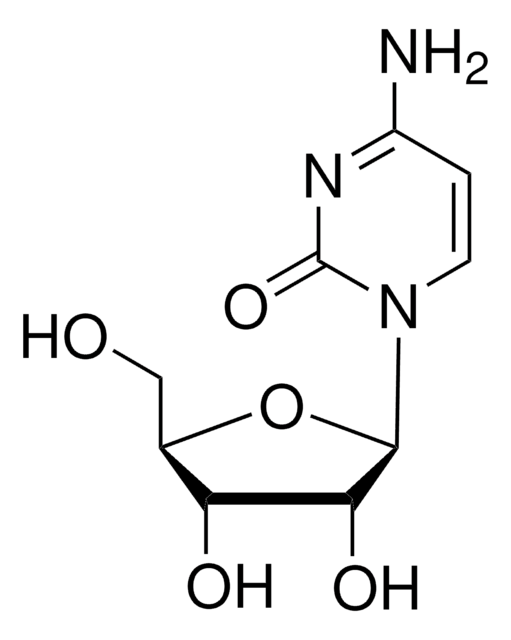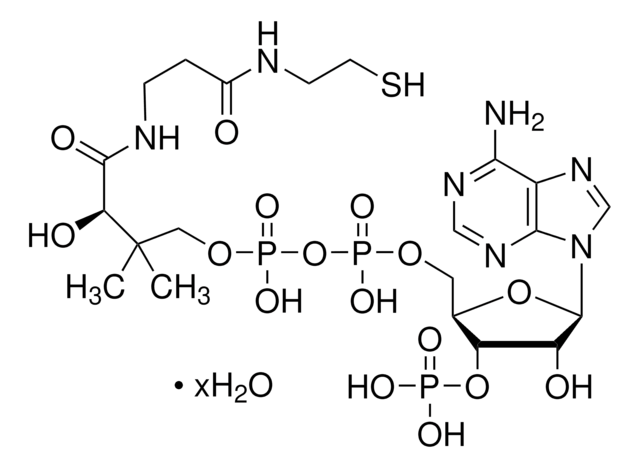M6751
5-Methylcytosine hydrochloride
≥99%
Synonym(s):
4-Amino-2-hydroxy-5-methylpyrimidine
Sign Into View Organizational & Contract Pricing
All Photos(3)
About This Item
Empirical Formula (Hill Notation):
C5H7N3O · HCl
CAS Number:
Molecular Weight:
161.59
EC Number:
MDL number:
UNSPSC Code:
41106305
PubChem Substance ID:
NACRES:
NA.51
Recommended Products
biological source
synthetic (organic)
Quality Level
200
300
assay
≥99%
form
crystalline powder
solubility
water: 50 mg/mL, clear to slightly hazy, colorless
SMILES string
O=C1NC(N)=C(C)C=N1.[H]Cl
InChI
1S/C5H7N3O.ClH/c1-3-2-7-5(9)8-4(3)6;/h2H,1H3,(H3,6,7,8,9);1H
InChI key
ANWMULVRPAUPJT-UHFFFAOYSA-N
Looking for similar products? Visit Product Comparison Guide
Application
5-Methylcytosine hydrochloride has been used as standard in high performance liquid chromatography (HPLC) for the estimation of global methylation rates. It has also been used in high-resolution mass spectroscopic analysis.
5-Methylcytosine is used in studies of DNA methylation processes (epigenetics).
Biochem/physiol Actions
5-Methylcytosine mediates gene expression, genomic imprinting and inhibition of transposable elements. It is closely associated with translational fidelity and tRNA recognition.
Storage Class
11 - Combustible Solids
wgk_germany
WGK 3
flash_point_f
Not applicable
flash_point_c
Not applicable
ppe
Eyeshields, Gloves, type N95 (US)
Choose from one of the most recent versions:
Already Own This Product?
Find documentation for the products that you have recently purchased in the Document Library.
Customers Also Viewed
Widespread occurrence of 5-methylcytosine in human coding and non-coding RNA
Squires JE, et al.
Nucleic Acids Research, 40(11), 5023-5033 (2012)
Absolute quantification of RNA or DNA using acid hydrolysis and mass spectrometry
Lowenthal MS, et al.
Analytical Chemistry, 6, 824-824 (2019)
Tet proteins can convert 5-methylcytosine to 5-formylcytosine and 5-carboxylcytosine
Ito S, et al.
Science (New York, N.Y.), 333(6047), 1300-1303 (2011)
Daniel Renciuk et al.
Nucleic acids research, 41(21), 9891-9900 (2013-08-22)
5-Hydroxymethylcytosine (5-hmC) was recently identified as a relatively frequent base in eukaryotic genomes. Its physiological function is still unclear, but it is supposed to serve as an intermediate in DNA de novo demethylation. Using X-ray diffraction, we solved five structures
Shinpei Yamaguchi et al.
Cell research, 23(3), 329-339 (2013-02-13)
Previous studies have revealed that mouse primordial germ cells (PGCs) undergo genome-wide DNA methylation reprogramming to reset the epigenome for totipotency. However, the precise 5-methylcytosine (5mC) dynamics and its relationship with the generation of 5-hydroxymethylcytosine (5hmC) are not clear. Here
Our team of scientists has experience in all areas of research including Life Science, Material Science, Chemical Synthesis, Chromatography, Analytical and many others.
Contact Technical Service